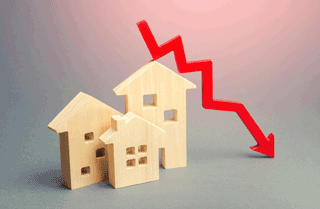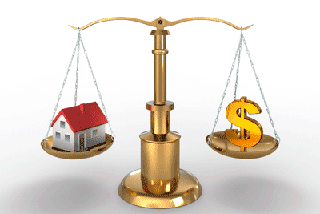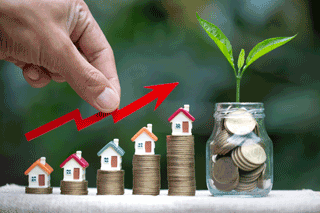Quote Of The Week
“It is interesting to see Australia take out the fifth position globally for the growth in house prices in Q3 of 2021 – the last time we were in a top five position was at the end of 2015, prior to tightened lending restrictions being implemented.”
Knight Frank Australia Partner and Head of Residential, Shayne Harris
Aussie Prices 5th In Global Rankings
 Australian house prices continue to soar with new research revealing it is one of the top five countries in the world for house price growth in the past 12 months.
Australian house prices continue to soar with new research revealing it is one of the top five countries in the world for house price growth in the past 12 months.
The Knight Frank Global House Price Index reveals Australian prices grew 19% in the past year, after eight consecutive quarters of price increases.
The report, which tracks house prices across 56 countries and territories, shows Australia is now fifth on price growth, behind Turkey (35%), South Korea (26%), New Zealand (20%) and Sweden (20%).
Knight Frank Australia Partner, Shayne Harris, says the impact of the pandemic on house prices in Australia is clear. He says the average annual growth from 2015 to 2020 was 4.4% which increased to 9.8% from the start of the pandemic.
“The last time Australia was in a top five position was at the end of 2015, prior to tightened lending restrictions being implemented,” he says.
Vacancies Continue To Drop
 National residential rental vacancy rates fell to a new low of 1.5% in November, according to new data from SQM Research.
National residential rental vacancy rates fell to a new low of 1.5% in November, according to new data from SQM Research.
The total number of vacancies Australia-wide now stands at 55,370, down from 56,953 in October. Melbourne and Brisbane’s vacancy rate dropped to 3.2% and 1.3% in November from 3.3% and 1.4% in October.
Many regional townships in NSW recorded a tightening in vacancy rates over the month of November such as Dubbo and NSW North Coast which recorded 0.4% and 0.5% respectively.
In Perth, Adelaide, Canberra, Darwin and Hobart the vacancy rate remained well below 1.0%.
SQM says many towns are expected to have the “no vacancy” sign out over the holiday period, including the Gold Coast which recorded another fall in vacancy rates to just 0.7%.
SQM managing director Louis Christopher says: “The no vacancy sign is lit up across most of Australia. There has never been a time when five of our eight capital cities simultaneously recorded rental vacancy rates under 1%. This has translated into surging rentals.”
5000 Homes Auctioned, 67% Sold
 The auction market is continuing to grow in strength, with nearly 5,000 homes put under the hammer in the past week across all capital cities.
The auction market is continuing to grow in strength, with nearly 5,000 homes put under the hammer in the past week across all capital cities.
This is the largest number to go for auction in one week since CoreLogic began keeping records in 2008. At the same time last year 2,580 properties were offered for auction.
While the number of properties being offered is growing, the auction clearance rate has started to trend a little lower– although some cities remain strong.
The national preliminary auction clearance rate was 67% last week, the lowest since late August.
The smaller capital cities performed the best with Adelaide achieving the highest preliminary clearance rate of 84%, followed by Canberra (76%) and Brisbane (73%). Melbourne’s clearance rate was 65% and Sydney’s was 64%.
Perth had only 26 auctions and a clearance rate of 27%.
Houses ‘Undervalued’ In Some Cities
 House prices in six Australian capital cities are “undervalued”, according to analysis based on the ability of owners to easily repay home loans.
House prices in six Australian capital cities are “undervalued”, according to analysis based on the ability of owners to easily repay home loans.
Buyers’ agency InvestorKit analysed the ability to make repayments, considering the median price in each city, average wages and loan affordability on a 3.5% interest rate. It found only Sydney and Melbourne house prices exceeded the affordability threshold.
Head of research Arjun Paliwal says the Sydney property market is overvalued by 22%, which means that prices are that much higher than the average household can afford, while the Melbourne median house price is 2.8% above what the average household can afford.
Perth is the most undervalued city, with its median house price ($510,000) 63% cheaper than the maximum price a local household can afford. Darwin with a median house price of $550,000 61% below the affordability level, Adelaide 43%, Brisbane 30%, Hobart 18% and Canberra 6.6%.
Housing Integral To Economic Recovery
 Australian homes are now worth $9.4 trillion, with strong price growth helping support the post-pandemic economic recovery.
Australian homes are now worth $9.4 trillion, with strong price growth helping support the post-pandemic economic recovery.
CoreLogic’s Economic & Property Review says growing property prices and a high level of transactions have helped boost the economy during the two years of the pandemic.
National dwelling values grew 22% in the 12 months to November 2021, with 614,635 properties sold, the highest annual transaction level since 2003.
CoreLogic head of research Eliza Owen says housing-related government support such as the First Home Loan Deposit and HomeBuilder schemes, plus other fiscal stimulus such as JobKeeper, helped many Australians service housing costs during the pandemic.
She says household savings increased to 24% on the back of strict pandemic lockdowns, allowing people to put more money into upgrading their homes.
Owens says the level of price growth and high level of transactions experienced in 2021 are unsustainable long-term.




